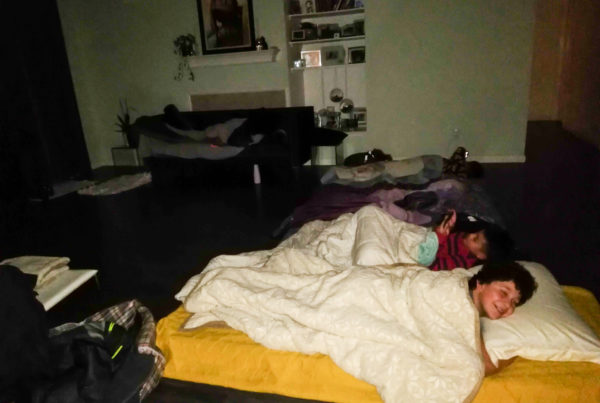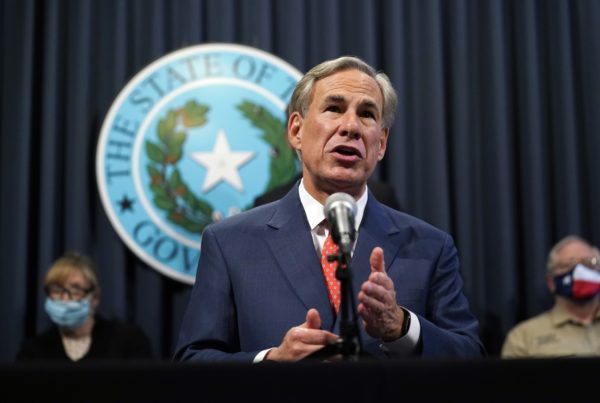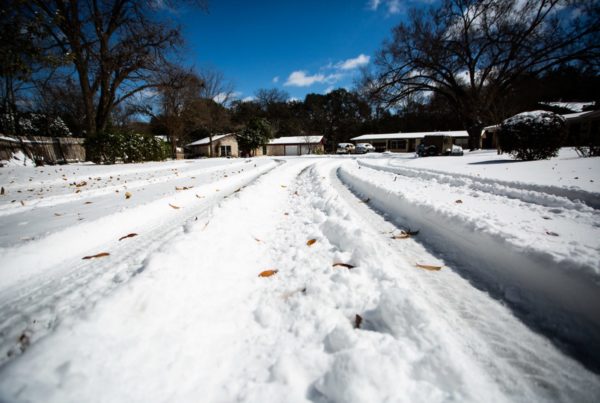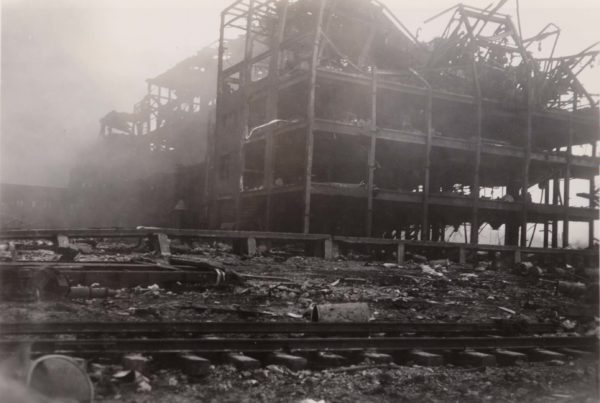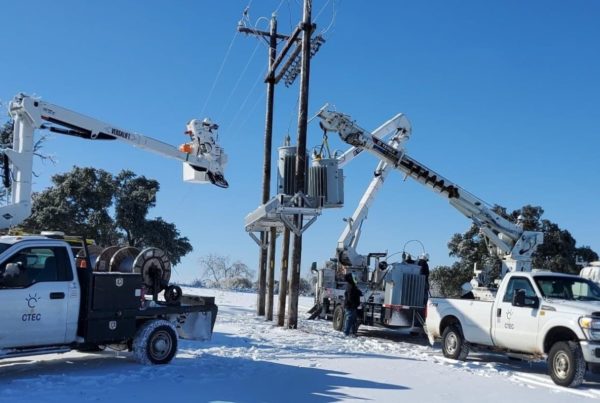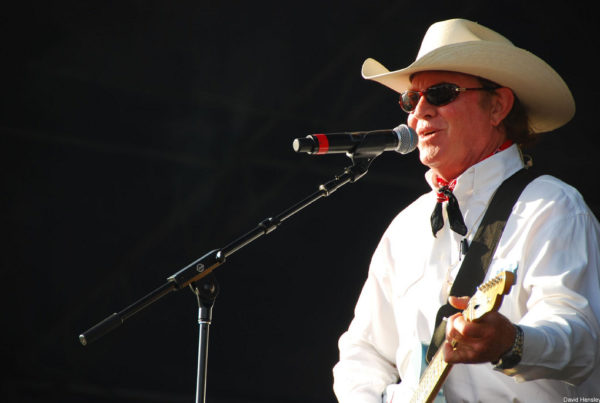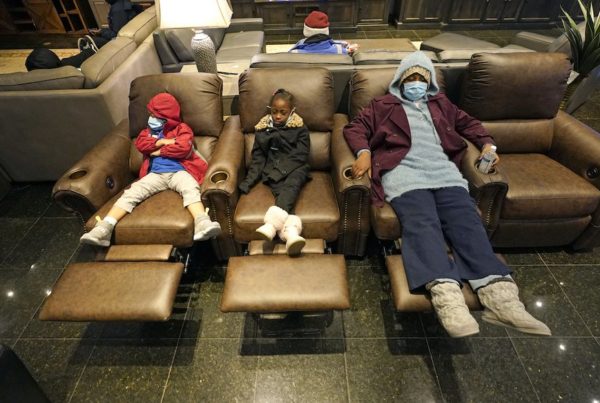From KTEP:
Jhon Jairo Ushca Alcoser, a 25-year-old migrant from Ecuador, said when he fell off the border wall, “my dream” of reaching the U.S. ended.
Pedro Gomez, 37, of Guatemala was so determined after he injured himself toppling off the top of the fence, he “crawled on hands and knees” away from the structure because he couldn’t walk.
The men are now recovering in a migrant shelter in this desolate border town about 90 miles from where they fell off the fence. They were swiftly returned to Mexico under title 42, a pandemic policy enacted by the Trump administration to control the spread of COVID-19.
Gomez said a Border Patrol agent told him he would be sent to the hospital in the U.S.. “But to my surprise, they dropped me off here.” He has casts on both his legs and sits in a wheelchair most of the day at the shelter.
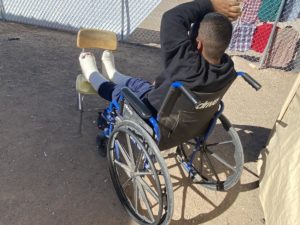
The father of four from Guatemala at a migrant shelter in Palomas, Chihuahua where he is recovering after falling off the border wall near El Paso.
Angela Kocherga / KTEP
Ushca Alcoser spends most of his day on a bunk bed in pain with a back and pelvis injury. He said he told the Border Patrol agents who found him at the foot of the wall he was in severe pain but his pleas “fell on deaf ears.”
“I told them I couldn’t move,” said Ushca Alcoser. But they said ‘stand up, standup.’ I don’t know where I found the strength.”
Both men said they were sent to Mexico without medical attention. Even though they crossed as undocumented migrants, they want their names to help verify their accounts.
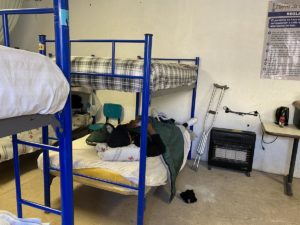
A 25-year-old migrant from Ecuador rests on a bunk bed at the Tierra de Oro migrant shelter in Palomas, Mexico. He says he injured his back and pelvis when he fell from the top of the border fence near El Paso in early February.
Angela Kocherga / KTEP
“When it is apparent that someone is hurt we will administer first aid and request assistance as needed,” said El Paso Sector Border Patrol Chief Gloria Chavez. In her emailed statement, Chavez said medical assistance may include a Border Patrol agent trained as an EMT or “possibly an ambulance service depending on the severity and complexity of the injury.”
Border Patrol disputes the men at the Palomas shelter were injured when they were expelled to Mexico. “Our records indicate that neither individual you mention presented illness or injury during their brief encounters with our agents,” according to an email from U.S. Customs and Border Protection.
Pastor Rosalio Sosa, director of Red de Red de Albergues Para Migrantes, or RAM, a network of shelters that includes the Palomas facility describes the actions of the Border Patrol agents who have return injured migrants to Palomas as “negligence.”
According to Sosa Border Patrol routinely sends migrants to Palomas with a range of injuries from minor to serious including those who have fallen off the Border Wall.
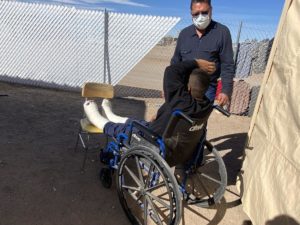
Pastor Rosalio Sosa, director of a network of migrant shelters, Red de Albergues Para Migrantes, speaks with a man recovering at the Palomas shelter.
Angela Kocherga / KTEP
“They just pick them up and send them over here. No wheelchair, nothing. Not even a Tylenol,” Sosa said. The shelter works to get the men medical care in Mexico.
The shelter in Palomas opened last year as title 42 took effect. It’s one of the return points for migrants taken into custody and swiftly expelled. In January alone about 3000 people a day were taken into custody and in recent months according to U.S. Customs and Border Protection.
CBP attributed the increase in crossings since April to “several factors, including underlying crime and instability in migrants’ home countries, which have been exacerbated by the ongoing COVID-19 pandemic and inaccurate perceptions of shifts in immigration and border security policies.”
Border Patrol estimates that between March 20, 2020 and February 4, 2021, 38 percent of all encounters involved recidivism, or individuals who have been apprehended more than once.
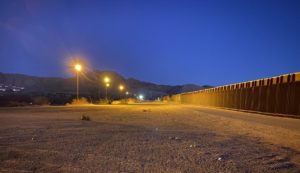
Angela Kocherga / KTEP
Angela Kocherga / KTEP
In the El Paso Border Patrol sector more migrants are climbing over the border fence, often using ladders according to residents who live near the barrier in Puerto Anapra, Mexico, across Sunland Park. That’s despite the fact the Trump administration upgraded the barricade to a 30-foot-tall bollard style structure.
Those who fall can suffer serious injuries. “Not all injuries are immediately visible,” said Leva Jusionyte, author of the book Threshold, Emergency Responders on the US-Mexico Border. She’s worked as a paramedic and is a professor of international security and anthropology at Brown University.
“The protocols for emergency responders is that if anyone falls from the height of more than double their heights, they need to be evaluated at the hospital,” said Justionyte.
The higher border fence is part of an enforcement strategy designed to deter illegal crossings by making it more difficult and dangerous.
“But that just hasn’t happened,” she said. “The border infrastructure is getting deadlier and people’s reasons for moving are increasing, as well so it is just a bad combination,” said Jusionyte.
Ruben Garcia, director of Annunciation House, an organization that provides temporary shelter for migrants and refugees in El Paso says the shelter is seeing more migrants with serious injuries from falling off the border fence. “When I say serious injuries. I’m talking about fractured legs in multiple places, fractured ankles, broken hips, pelvises, broken ribs, spinal injuries, a good number of people with spinal injuries,” said Garcia.
He said the “dramatic” increase in injuries started in the last six months to a year.
As many as three migrants a week arrive at Annunciation House. They are sent to the hospital first by Border Patrol according to Garcia. Most of those getting medical care are mostly women from Central America he said.

Residents living in Mexico near the border fence west of El Paso say they’re seeing more people scale the structure, often using ladders.
Angela Kocherga / KTEP
“They’re not able to hold on when they’re trying to come down and you’re talking about falls that could be from 30 feet type thing,” said Garcia.
Just after sunset on a recent evening near the fence neighbors on both sides expect another busy night. The area has become a hotspot for smugglers moving migrants across the border in spite of the fence.
“The Border Patrols are up and down and the helicopters. It’s normal to us,” said Janet Lara who lives in Sunland Park.
Her mobile home is on the last street inear the border barrier where the dreams of migrants trying to reach the United States start and sometimes end.




